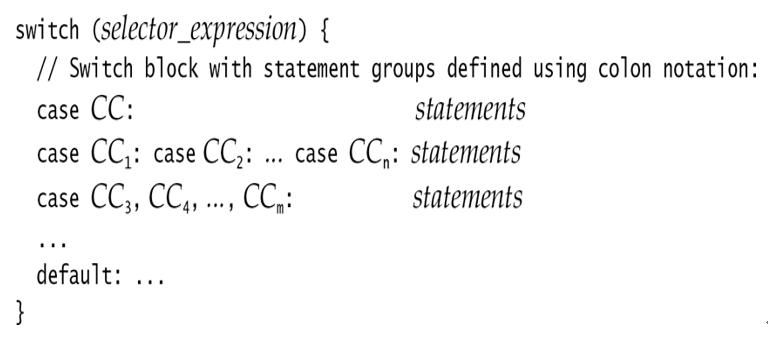3.12 The main() Method
The mechanics of compiling and running Java applications using the JDK are outlined in §1.8, p. 19. The java command executes a method called main in the class specified on the command line. This class designates the entry point of the application. Any class can have a main() method, but only the main() method of the class specified in the java command starts the execution of a Java application.
The main() method must have public access so that the JVM can call this method (§6.5, p. 345). It is a static method belonging to the class, so no object of the class is required to start its execution. It does not return a value; that is, it is declared as void. It has an array of String objects as its only formal parameter. This array contains any arguments passed to the program on the command line (see the next subsection). The following method header declarations fit the bill, and any one of them can be used for the main() method:
public static void main(String[] args) // Method header
public static void main(String args[]) // Method header
public static void main(String… args) // Method header
The three modifiers can occur in any order in the method header. The requirements given in these examples do not exclude specification of other non-access modifiers like final (§5.5, p. 226) or a throws clause (§7.5, p. 388). The main() method can also be overloaded like any other method. The JVM ensures that the main() method having the correct method header is the starting point of program execution.
Program Arguments
Any arguments passed to the program on the command line can be accessed in the main() method of the class specified on the command line. These arguments are passed to the main() method via its formal parameter args of type String[]. These arguments are called program arguments.
In Example 3.16, the program prints the arguments passed to the main() method from the following command line:
>
java Colors red yellow green “blue velvet”
The program prints the total number of arguments given by the field length of the String array args. Each string in args, which corresponds to a program argument, is printed together with its length inside a for loop. From the output, we see that there are four program arguments. On the command line, the arguments can be separated by one or more spaces between them, but these are not part of any argument. The last argument shows that we can quote the argument if spaces are to be included as part of the argument.
When no arguments are specified on the command line, a String array of zero length is created and passed to the main() method. Thus the reference value of the formal parameter in the main() method is never null.
Note that the command name java and the class name Colors are not passed to the main() method of the class Colors, nor are any other options that are specified on the command line.
As program arguments can only be passed as strings, they must be explicitly converted to other values by the program, if necessary.
Program arguments supply information to the application, which can be used to tailor the runtime behavior of the application according to user requirements.
Example 3.16 Passing Program Arguments
public class Colors {
synchronized public static void main(String[] args) {
System.out.println(“No. of program arguments: ” + args.length);
for (int i = 0; i < args.length; i++)
System.out.println(“Argument no. ” + i + ” (” + args[i] + “) has ” +
args[i].length() + ” characters.”);
}
}
Running the program:
Click here to view code image >
java Colors red yellow green “blue velvet”
No. of program arguments: 4
Argument no. 0 (red) has 3 characters.
Argument no. 1 (yellow) has 6 characters.
Argument no. 2 (green) has 5 characters.
Argument no. 3 (blue velvet) has 11 characters.




